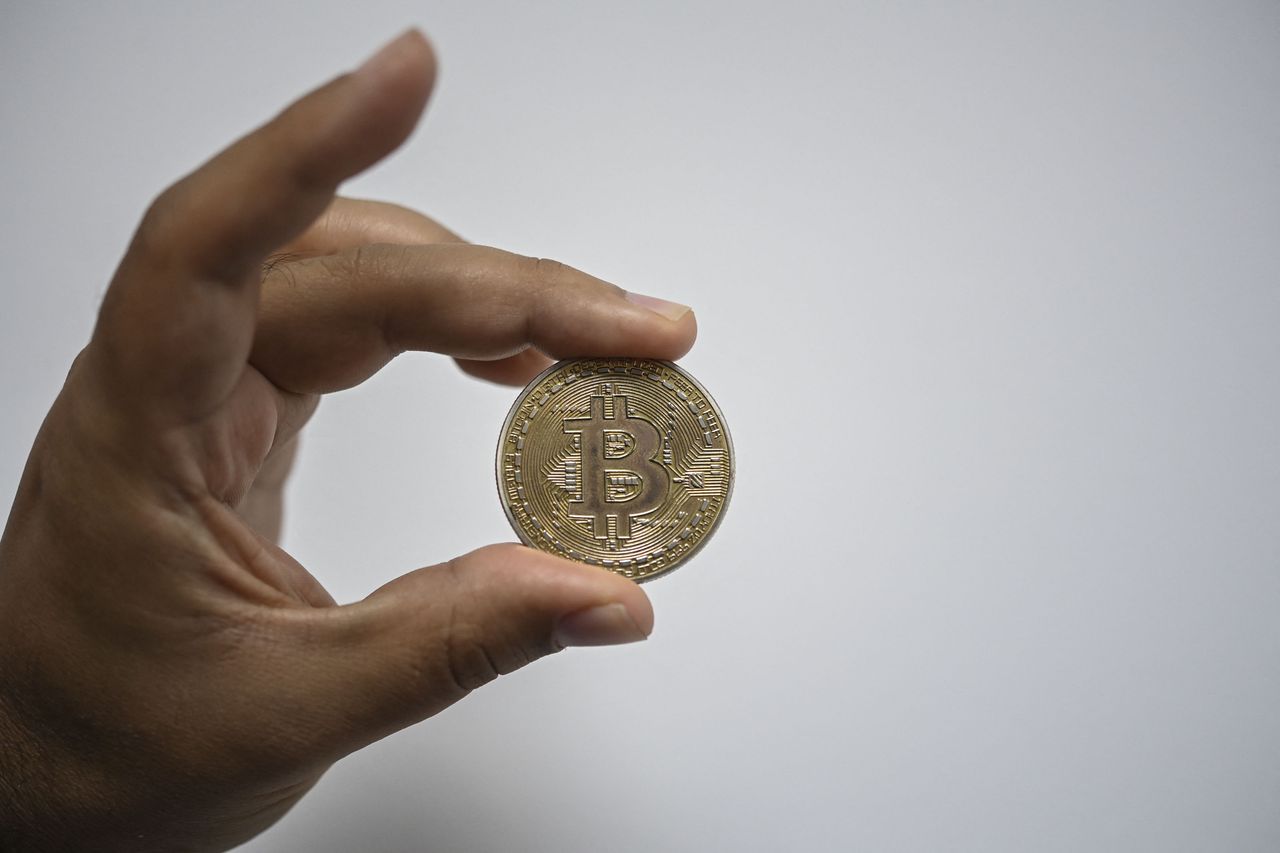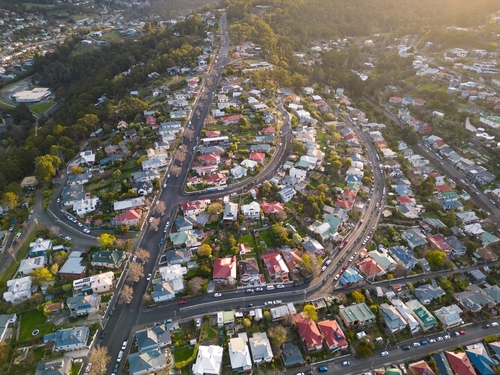Bitcoin Prices Keep Plunging
With no sign of stopping or where the bottom may be.
Cryptocurrency prices tumbled over the weekend and into Monday, with Bitcoin nearing a yearly low as investors continued to dump risky assets amid a tough stock market and challenging macroeconomic backdrop.
The price of Bitcoin has fallen more than 10.2% over the past 24 hours to roughly $44,000, deepening losses from over the weekend after changing hands around $51,000 on Friday. It puts the largest crypto at its lowest level since July 2021.
The latest selloff brings Bitcoin to less than half the value of its all-time high of $99,180 reached in November 2021, and is a significant move away from the relatively tight range near $57,000 that Bitcoin has been trading around for months.
“Bitcoin has followed the lead of the equity market, extending lower after a weak April,” said Katie Stockton, managing partner at technical research group Fairlead Strategies.
“Short-term momentum has deteriorated,” Stockton said. “Bitcoin is no longer oversold from a short-term perspective. This creates additional risk.”
Ether, the second-largest crypto, was down 10% to below $3590, declining over the weekend after trading around $3,880 on Friday. It’s now changing hands around the lowest levels since 2021.
Smaller cryptos, or “altcoins,” were not spared, declining Monday to further losses since Friday. Solana and Cardano both fell around 12% to 15%. Luna, the token that plays an integral role in maintaining stablecoin TerraUSD’s peg to the U.S. dollar, has dropped more than 30% since Friday after selling pressure saw Terra de-peg over the weekend and Monday. The incident with Terra has also rattled the crypto space more widely.
Memecoins— called that because they were initially intended as internet jokes rather than significant blockchain projects—also fell, with Dogecoin losing 13% and Shiba Inu 16% lower.
Bitcoin and other digital assets should, in theory, trade independently of mainstream financial markets. But the recent selloff in cryptocurrencies largely matches action in the stock market, and Bitcoin has largely shown itself to be correlated with other risk-sensitive assets like stocks, and especially technology stocks.
The tech-heavy Nasdaq Composite index has lost more than 25% this year, putting it in bear market territory, while the wider S&P 500 is down 16%. The S&P 500 notched its fifth straight week of losses last Friday, the worst run since 2011, and stocks were headed lower again on Monday.
Investors face a challenging and dynamic monetary policy environment. The Federal Reserve has already moved aggressively to raise interest rates this year, and is only expected to keep going as the central bank fights historically high inflation. This risks significantly denting economic demand, causing a recession.
The continuation of severe Covid-19 lockdowns in China, which threaten to compromise global supply chains, limiting companies’ access to materials and only stoking inflation further, only complicates matters.
Against this backdrop, “risk assets” like tech stocks and cryptos are faring particularly badly as investor sentiment deteriorates, hurt in part because bond yields keep rising.
The yield on the benchmark 10-year U.S. Treasury note neared 3.2% at points on Monday, which would put it on track to close at the highest levels since late 2018. When yields climb, the math is tough for riskier assets: Higher yields reduce the extra return relative to bonds that traders expect to get from taking riskier bets.
So where will cryptos find the bottom? In the near-term, volatility looks expected to continue, and a turnaround may not be coming anytime soon.
“Bitcoin may be on the course to restart a steep downtrend,” said Yuya Hasegawa, an analyst at crypto exchange Bitbank, who sees the largest crypto trading in a range of $30,000 to $38,000 this week.
Looming large in the days ahead is inflation data for April. The U.S. consumer price index (CPI) is due on Wednesday, and investors are likely to latch onto the number as the market keeps revising its estimates for how aggressive Fed policy will be.
If CPI grew more than 8.1% year over year last month, which is around what markets expect, investors could take that as a sign that the Fed will move more aggressively—and this could lead to continued selling.
“Although it will not be enough to reverse the market’s sentiment completely, lower CPI readings will suffice to support the price of Bitcoin temporarily,” said Hasegawa. “Until then, the price has to maintain the $33,000 psychological level, which is also around the 2022 low, to prevent the technical sentiment from aggravating further.”
Another negative sign for the crypto market is that institutional money may be leading the price pressure, according to Marcus Sotiriou, an analyst at digital asset broker GlobalBlock. Sotiriou said that, preceding the recent drop, the price for Bitcoin listed on exchange Coinbase Global (ticker: COIN) was at a discount compared to the Binance exchange.
“This is telling as a greater percentage of institutions use Coinbase compared to retail, whereas the opposite is the case for Binance,” Sotiriou said. “The price mismatch mentioned suggests institutions are not currently as interested as retail.”
Reprinted by permission of Barron’s. Copyright 2021 Dow Jones & Company. Inc. All Rights Reserved Worldwide. Original date of publication: May 8, 2022.
 Copyright 2020, Dow Jones & Company, Inc. All Rights Reserved Worldwide. LEARN MORE
Copyright 2020, Dow Jones & Company, Inc. All Rights Reserved Worldwide. LEARN MORE
This stylish family home combines a classic palette and finishes with a flexible floorplan
Just 55 minutes from Sydney, make this your creative getaway located in the majestic Hawkesbury region.
Continued stagflation and cost of living pressures are causing couples to think twice about starting a family, new data has revealed, with long term impacts expected
Australia is in the midst of a ‘baby recession’ with preliminary estimates showing the number of births in 2023 fell by more than four percent to the lowest level since 2006, according to KPMG. The consultancy firm says this reflects the impact of cost-of-living pressures on the feasibility of younger Australians starting a family.
KPMG estimates that 289,100 babies were born in 2023. This compares to 300,684 babies in 2022 and 309,996 in 2021, according to the Australian Bureau of Statistics (ABS). KPMG urban economist Terry Rawnsley said weak economic growth often leads to a reduced number of births. In 2023, ABS data shows gross domestic product (GDP) fell to 1.5 percent. Despite the population growing by 2.5 percent in 2023, GDP on a per capita basis went into negative territory, down one percent over the 12 months.
“Birth rates provide insight into long-term population growth as well as the current confidence of Australian families,” said Mr Rawnsley. “We haven’t seen such a sharp drop in births in Australia since the period of economic stagflation in the 1970s, which coincided with the initial widespread adoption of the contraceptive pill.”
Mr Rawnsley said many Australian couples delayed starting a family while the pandemic played out in 2020. The number of births fell from 305,832 in 2019 to 294,369 in 2020. Then in 2021, strong employment and vast amounts of stimulus money, along with high household savings due to lockdowns, gave couples better financial means to have a baby. This led to a rebound in births.
However, the re-opening of the global economy in 2022 led to soaring inflation. By the start of 2023, the Australian consumer price index (CPI) had risen to its highest level since 1990 at 7.8 percent per annum. By that stage, the Reserve Bank had already commenced an aggressive rate-hiking strategy to fight inflation and had raised the cash rate every month between May and December 2022.
Five more rate hikes during 2023 put further pressure on couples with mortgages and put the brakes on family formation. “This combination of the pandemic and rapid economic changes explains the spike and subsequent sharp decline in birth rates we have observed over the past four years,” Mr Rawnsley said.
The impact of high costs of living on couples’ decision to have a baby is highlighted in births data for the capital cities. KPMG estimates there were 60,860 births in Sydney in 2023, down 8.6 percent from 2019. There were 56,270 births in Melbourne, down 7.3 percent. In Perth, there were 25,020 births, down 6 percent, while in Brisbane there were 30,250 births, down 4.3 percent. Canberra was the only capital city where there was no fall in the number of births in 2023 compared to 2019.
“CPI growth in Canberra has been slightly subdued compared to that in other major cities, and the economic outlook has remained strong,” Mr Rawnsley said. “This means families have not been hurting as much as those in other capital cities, and in turn, we’ve seen a stabilisation of births in the ACT.”
This stylish family home combines a classic palette and finishes with a flexible floorplan
Just 55 minutes from Sydney, make this your creative getaway located in the majestic Hawkesbury region.






















